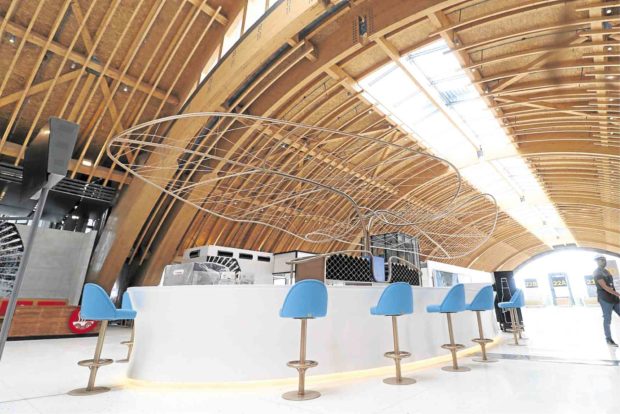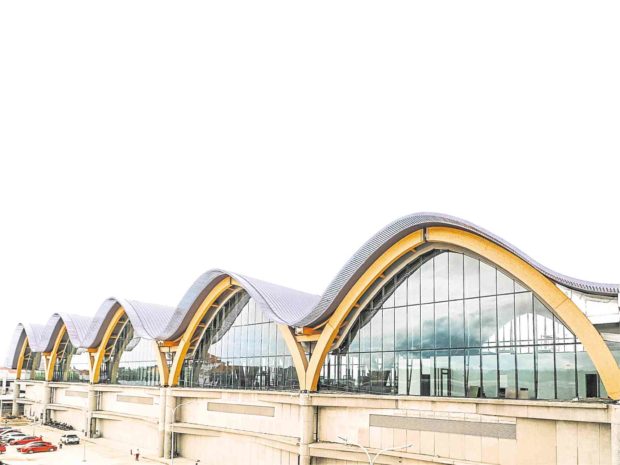Mactan’s latest gem
Cebu City is the most highly urbanized city in Central Visayas. It is the “Queen City of the South” on Cebu Island and is one of the most popular jump off points for foreign tourists. Cebu now has something new to be elevated to a world class destination.
The Mactan-Cebu International Airport (MCIA) Terminal 2 was inaugurated on June 7, with President Duterte calling it, “The most beautiful airport in the country today.”
With operations set to commence tomorrow, developer GMR Megawide Cebu Airport Corp. (GMCAC) and its airport partners are focused on ensuring that Cebu’s new international terminal is ready to welcome its first flights.
MCIA is the gateway to the Central and Southern Philippines and the second largest airport facility in the country. In 2017, it welcomed a total of 10 million passengers, a 12 percent increase from the 8.9 million passengers it recorded in 2016. For this year, GMCAC is looking at 11.2 million passengers.
Developing this facility is GMCAC, a Filipino-led company. Filipino engineering and infrastructure company Megawide and Indian infrastructure developer GMR won the contract to develop the landside facilities of MCIA for a period of 25 years. This contract includes the construction of a second passenger terminal building and the rehabilitation of the existing terminal to meet the demands of Cebu’s growing passenger traffic.
Article continues after this advertisementSince taking over operations in 2014, GMCAC has opened more domestic and international connections through strategic marketing initiatives, making Cebu a vital gateway to the Philippines. To date, MCIA has a total of 25 international destinations, 30 domestic destinations and 26 partner airline carriers.
Article continues after this advertisementThe opening of Terminal 2 will increase passenger capacity to 12.5 million. The new terminal, spanning 65,500 sqm will not only lessen congestion but will offer an exciting and wide-ranging retail environment.
Multi-awarded Hong Kong-based Integrated Design Associates is the architect of the terminal. Led by its Principal Architect Winston Shu, IDA envisioned a unique design that demonstrates the warmth and friendliness of the local culture, and combines form with the functionality that is needed by any airport.
The most recognizable element of the terminal is its undulating roof structure that pays tribute to the waves surrounding Cebu. The structure is composed of an array of glulam arches that are 15 meters tall, which form the roof curvature. The arches span every 30 meters, enabling Terminal 2 to be as column-free as possible.
A three-layer glass wall system surrounds the terminal, bringing in natural light and giving excellent views of the airport. The system keeps noise value to a minimum and reflects off the heat, keeping the terminal cool even in daytime.
A two-level forecourt segregates both the Arrivals and Departures area. There will be 48 check-in counters that are expandable to 72; and provisions for seven passenger boarding bridges, which can be expanded to 12 boarding bridges serving wide and narrow body aircrafts. It will likewise be equipped with 12 escalators and 15 elevators facilitating easy passenger movement.
A car parking facility will be constructed. It is expected to accommodate 550 cars and may be expanded to 750 cars as needed. There will also be an array of food and retail choices, including a mall, casino and a hotel.
London-based SSP Group has been awarded the license to design, develop, set up and operate the food and beverage units of Terminals 1 and 2 of the MCIA. The contract will begin with the opening of Terminal 2.
SSP is a multinational company with over 400 food brands in its portfolio. It currently operates in more than 125 airports including JFK, Heathrow and Hong Kong International Airport, and in over 30 countries within leading travel and retail locations such as airports, railway stations and shopping malls.
Within three years of operations and management of the airport, GMCAC bagged four awards from different world-renowned financial institutions plus a recognition of being one of the Best Airports in Asia.
These awards include:
Routes Asia 2018 Shortlisted for Marketing Award
Routes Asia 2017 Shortlisted for Marketing Award + Commendation for Excellence in Airline Marketing
CAPA’s 2016 Best Regional Airport in Asia Pacific
Routes Asia 2016 Shortlisted for Marketing Award
World Routes 2016 Shortlisted for Marketing Award

